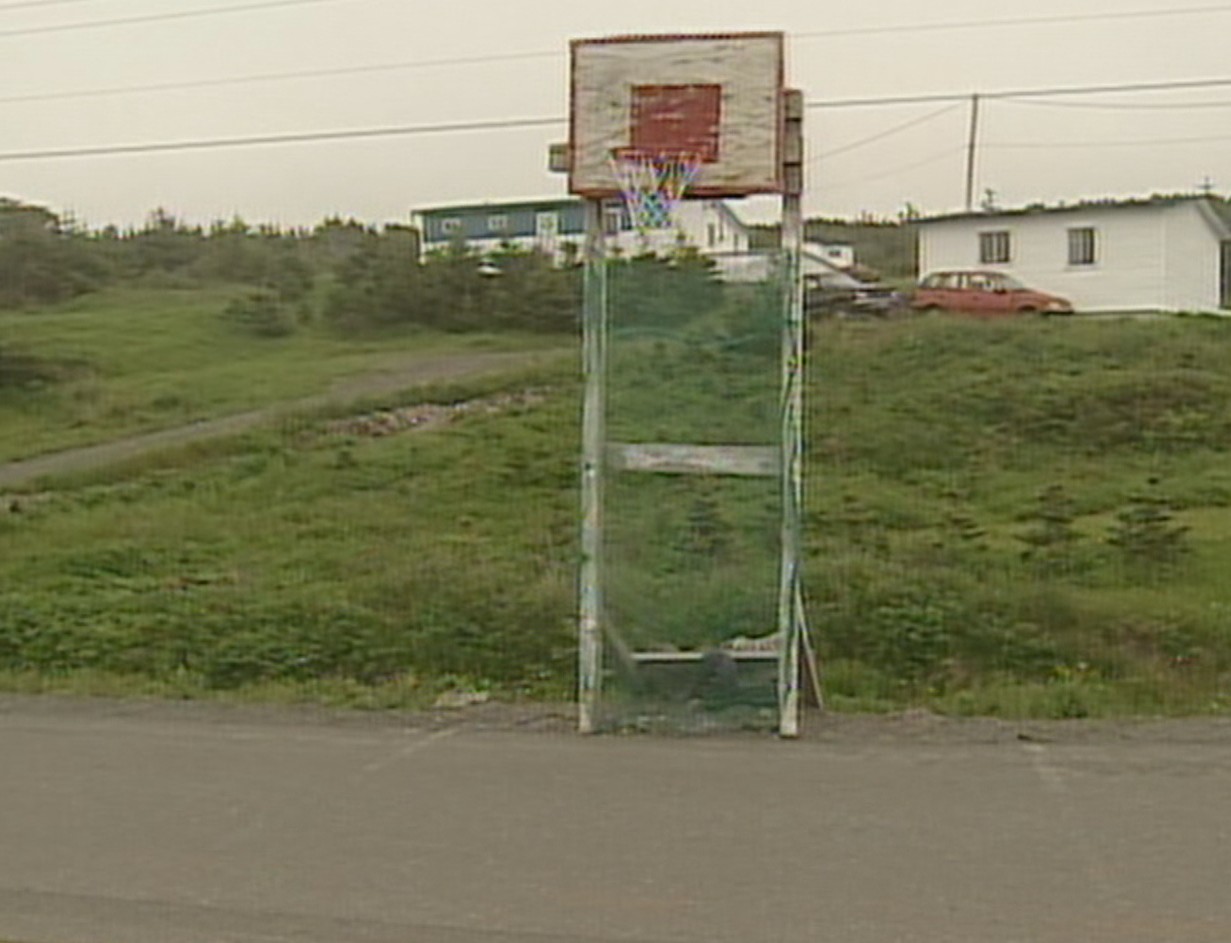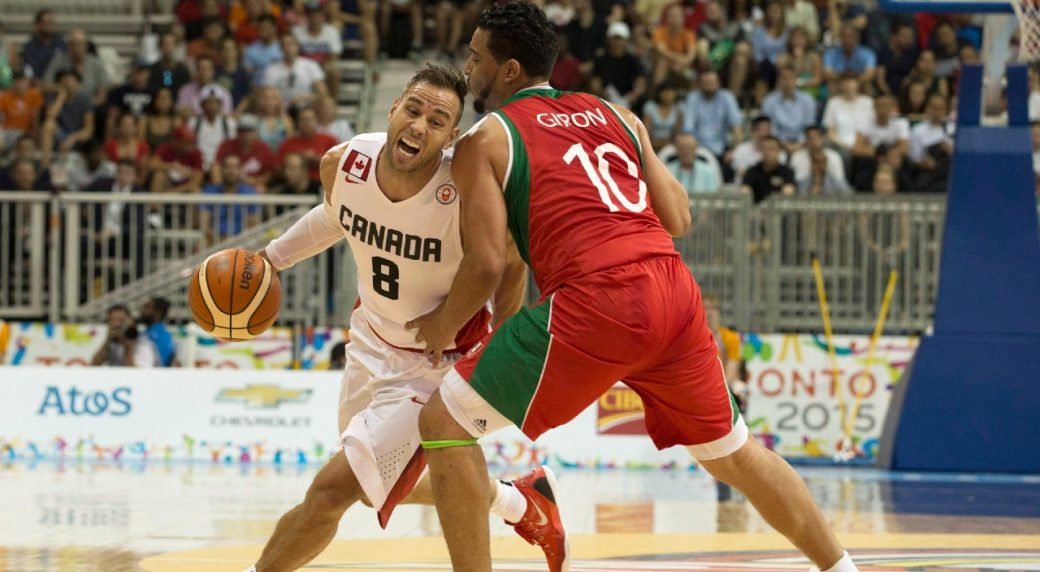Carl English’s basketball dreams have always been handmade.
There was never a turnkey solution available for the hoops-obsessed orphan who somehow made the leap from tiny Patrick’s Cove, population 20, to the Canadian national team, the cusp of the NBA and the best leagues in Europe.
He built his own baskets, poured his own asphalt, and constructed a 17-year career out of nothing, all while overcoming unimaginable personal tragedies in carving out one of the most remarkable stories in all of Canadian sports.
So of course English, upon retiring from playing, started his own academy program in under-served St. Johns and -- finding facilities lacking -- figured, ‘screw it, I’ll build it myself.’
And so he did.
On Monday English will open the doors of the CE23 Academy to aspiring basketball players from his native Newfoundland and Labrador.
“It’s surreal,” says English about the feeling he gets looking out on the shiny expanse of hardwood with his personal logo at centre court in an abandoned fabrication shop serving the offshore oil industry. "It hit me the other day… I thought, ‘wow, this is pretty frigging amazing.’”
He made it so.
“When I attacked this project, my wife will text me at 7 o’clock ‘are you coming home for supper?’ and I’ll be like, 'I’m almost done.' And she’d say, ‘you’ll end up in the hospital’ And I’m ‘no, I’m good’.
“I’m a different beast. There’s only one way to attack these types of things and that’s to give it everything.”
It’s the only gear English knows.
Like everything in his novel of a life, the process wasn’t easy or straightforward. English initially launched his academy a year ago, during the pandemic.
Even so, things were going well as the combination of the growing passion for basketball, the lack of opportunities for elite training and English’s near legend status in his home province saw his offerings over-subscribed from the jump.
But the building he was renting got sold from under him and it was back to the square one.
“I had spent about $100,000 on things to put into that leased space -- four hoops and the rest -- and I was like, ‘ok, this sucks’,” says English.
This time English figured: go big or not at all.
Initially he thought about buying land and building from the ground up, but with the various supply bottlenecks due to COVID, he figured that would take two years or more and he didn’t want to wait.
Eventually, he decided to buy a pre-existing building and retrofit it.
For a mere $3 million or thereabouts he was able to get an old fabrication shop used during the Hibernia project. Since taking possession in August he has been working feverishly to convert a heavy industrial space -- he had to move out a pair of five-ton cranes that came with the property -- into a facility that matched the images that have been dancing in his mind’s eye as he plied his trade across some of the best leagues in Europe.
“I remember drawing up plans like this in when I played for Gran Canaria [in the Liga ACB in Spain],” says English after a long day putting in the finishing touches. “When I came home it was always a problem to get in gyms [to train], and I’d remember places I’d trained and thinking, how come I don’t have this in Newfoundland?
“I always loved at Scotiabank Arena [where English trained with the national team] that the practice court and the weight room is right there, so that was what I tried to envision.”
No detail has been spared. There is a full-size NBA floor running the length of the building and a smaller 3-on-3 court as well. On the mezzanine (which English had to build) there is an area for weight training, a viewing area, a pro shop, video rooms and offices.
Downstairs -- adjacent to the floor -- there is a turf track with sprinting lanes and another workout area with space for a row of treadmills, bikes, elliptical trainers and eight squat racks.
Alongside one sideline is the message “Every Single Day” and on the other “Earned Not Given” with English’s CE23 logo embedded at center court. The colour scheme is black and gold -- a nod to Scotiabank Arena, Drake and OVO, but everything else bears English’s blood, sweat and blisters.
“In this project- and I’m not trying to tap myself on the back, by no means -- but today for instance I went from painting lines to sanding the floor to laying logos to laying down the 3,000 sf of turf. I was troweling on glue at 7:30,” he said one evening last week.
Step by step #ce23 pic.twitter.com/pS5h6zI6Jy
— Carl English (@cenglish23) September 18, 2021
“Of the 14,000 sf of hardwood in there I’ve laid or had my hands on well over half, maybe 70 per cent of it,” he said. “I subcontracted out the plumbing, electrical, and the tile work and the plaster -- I don’t want to mess that up -- but the things I can do, I do, because I want it done a certain way.”
It’s a full-circle moment for English. He built his first basketball hoop -- the first of several iterations, actually -- that eventually was set up on the side of the two-lane highway outside his home about two hours from St. John’s. In all weather and at all hours, he channelled his pain into progress, eventually earning a scholarship to the University of Hawaii and launching his pro career.
 One of the basketball nets Carl English built for himself as a boy growing up in Newfoundland. (Photo courtesy: Carl English)
One of the basketball nets Carl English built for himself as a boy growing up in Newfoundland. (Photo courtesy: Carl English)
In building his academy he leaned on the skills he learned working alongside his uncle, Junior McGrath, who took him in as a five-year-old after a house fire claimed the lives of English’s parents. He paid tribute too: McGrath -- “the person closest to me in the whole world” -- was how English described him in his autobiography, Chasing the Dream -- died of a heart attack when English was 19.
“My uncle was a carpenter, a plumber -- he was everything,” says English. “And after he had a stroke he couldn’t use his hands, so I was always his hands. He would tell me what to do, I was always learning that way.”
Basketball eventually took English off the Island, but even after winding up his professional career with two seasons playing for the St. John’s Edge in the NBL Canada, English knew that there was more to be done.
“Me coming back and playing those two years -- this was a hockey town and the nights I played you’re getting 6,000 fans, and that’s a lot in a small town,” he said. “It’s a special place and I realized I can help out a lot of people.”
That next stage begins in earnest on Monday in a facility that bears English’s name and represents his heart and soul.
He’s got 200 kids already registered. For the price of $10 an hour they’ll get 20 hours a month of training -- three practices or training sessions and two dryland sessions a week.
“It’s a job to beat those prices,” he says. “What I can do now is I have a platform and a place where I can instill and teach accountability and hard work and determination. And if even they don’t go on to make the NBA or get a college scholarship, these are life lessons they can take and use every day and that’s something I’m going to try and do with this academy.”
He’s just getting started, he figures, but the next chapter of his career is already as promising as all those that came before.

